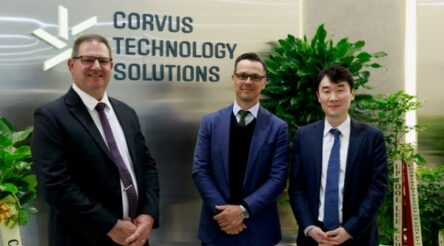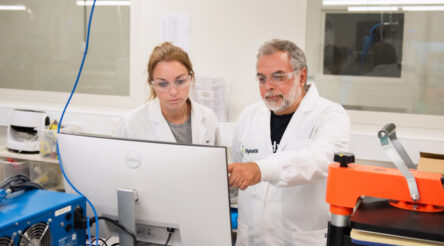Flinders researchers take on industrial dye waste with new photocatalysis method

A new study led by Flinders University has discovered what the university says is “a novel way to degrade and potentially remove toxic organic chemicals” such as azo dyes – synthetic dyes widely-used in industries such as textiles and food – using chemical photocatalysis powered by ultraviolet light.
Professor Gunther Andersson, from the Flinders Institute for NanoScale Science and Technology, said in a statement that the process involves creating metallic “clusters” of just nine gold atoms chemically “anchored” to titanium dioxide, which in turn drives the reaction by converting the energy of absorbed UV light.
“The gold nanocluster cocatalysts enhance the photocatalytic work of the titanium dioxide and reduce the time required to complete the reaction by a factor of six,” explains a statement from Flinders, referring to the team’s paper in the journal Solar RRL (linked.)
“These types of heterogeneous semiconductor-mediated photocatalysis systems provide a significant advantage over other advanced chemical processes,” added Andersson.
“It can facilitate the mineralisation of a large range of organic pollutants, like azo dyes, into water and carbon dioxide molecules with a high degradation efficiency.”
“A variety of physical, chemical and biological processes are currently used to remove carcinogenic and recalcitrant organic compounds from water.”
Azo dyes are estimated to represent about half the dyes used in the textile and dye industry.
According to Product Safety Australia, certain azo dyes are problematic, and “the majority don’t lead to exposure to hazardous aromatic amines.”
Another study by Flinders University nanotech researchers, published in Applied Surface Science, combined the gold cluster cocatalyst and modified semiconductors for photocatalysis degrading methyl orange, a type of azo dye.
The study tested this using “a vortex fluidic device” (pictured) developed at Flinders Professor Colin Raston’s nanotechnology laboratory.
Co-author of the paper, Flinders PhD Dr Anahita Motamedisade – who has since moved onto a position as research fellow at the Centre for Catalysis and Clean Energy at Griffith University – said traditional wastewater treatments often failed to effectively remove dangerous contaminants.
“We hope to build onto these more sustainable and thorough photocatalytic degradation processes to help completely remove the toxins and tackle this global problem,” said Motamedisade.
Picture: credit Vortex Fluidic Technology/Youtube
@aumanufacturing Sections
Analysis and Commentary Awards Defence Manufacturing News Podcast Technology Videos










